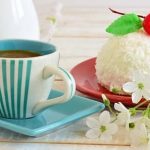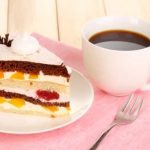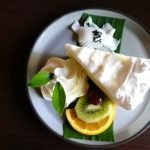Icing sugar, also known as powdered sugar or confectioner’s sugar, is a versatile ingredient that plays a crucial role in cake decorating. Learning how to use icing sugar for cake decorating can take your creations to the next level, adding sweetness, texture, and aesthetic appeal to your baked goods.
When it comes to creating stunning cakes, icing sugar is a fundamental component that helps achieve that perfect finish. Whether you’re making buttercream frosting or royal icing, understanding the different types of icing sugar available and the tools needed for proper application is essential.
In this article, we will explore the various types of icing sugars available and their differences, along with the tools and equipment necessary for using icing sugar in cake decorating. From creating buttercream frosting to mastering different techniques for incorporating icing sugar into your designs, we’ll provide you with valuable tips and tricks for achieving the perfect consistency every time.
Types of Icing Sugar
Powdered sugar and confectioner’s sugar are two common types of icing sugar used in cake decorating. While these terms are often used interchangeably, there are some subtle differences between the two that can affect their performance in decorating cakes.
Differences Between Powdered Sugar and Confectioner’s Sugar
One key difference between powdered sugar and confectioner’s sugar lies in their labeling. In the United States, the terms “powdered sugar” and “confectioner’s sugar” refer to the same product: a finely ground white sugar mixed with a small amount of cornstarch to prevent caking. On the other hand, outside of the US, the term “icing sugar” is commonly used which may or may not contain cornstarch.
Using Powdered Sugar vs Confectioner’s Sugar in Cake Decorating
When it comes to using either powdered sugar or confectioner’s sugar for cake decorating, both can be suitable options depending on your preference and availability. Powdered sugar with cornstarch is great for making icings, frostings, and dusting baked goods due to its fine texture and smooth consistency. Conversely, confectioner’s sugar without cornstarch may be preferred by some bakers for a cleaner taste and appearance in certain recipes.
Incorporating either type of icing sugar into your cake decorating endeavors can provide you with an array of options for creating beautiful designs and delicious treats. Experimenting with different types of icing sugars can help you discover which works best for your specific baking needs and preferences when it comes to how to use icing sugar for cake decorating.
Tools and Equipment Needed for Using Icing Sugar in Cake Decorating
Icing sugar, also known as powdered sugar or confectioner’s sugar, is a crucial ingredient in cake decorating. It not only adds sweetness but also contributes to the texture and appearance of baked goods. To effectively use icing sugar for cake decorating, you will need specific tools and equipment to ensure that your creations turn out beautifully.
One essential tool for working with icing sugar is a sifter or sieve. This helps to remove lumps and ensure a smooth consistency when making frosting or dusting cakes with powdered sugar. A good quality offset spatula is also necessary for spreading frosting smoothly and evenly on cakes. Piping bags and various tips are commonly used for creating intricate designs with royal icing made from icing sugar.
When it comes to equipment, invest in a stand mixer or hand-held electric mixer for effortless blending of ingredients when making buttercream frosting using icing sugar. A rubber spatula will come in handy for scraping down the sides of mixing bowls and ensuring all ingredients are well incorporated. Additionally, having a turntable will make it easier to decorate cakes neatly from all angles.
To achieve professional-looking cake decorations, having the right tools and equipment is just as important as using icing sugar correctly. With the proper setup, you can create stunning designs and embellishments that will impress anyone who enjoys your delicious treats.
| Tools Needed | Equipment Needed |
|---|---|
| Sifter or sieve | Stand mixer or hand-held electric mixer |
| Offset spatula | Rubber spatula |
| Piping bags and tips | Turntable |
Different Techniques for Incorporating Icing Sugar Into Cake Decorating
Icing sugar, also known as powdered sugar or confectioner’s sugar, plays a crucial role in cake decorating. Whether you are a beginner or a seasoned baker, mastering different techniques for incorporating icing sugar into your cake decorations can elevate the overall look of your creations. One popular method is creating buttercream frosting, which requires the use of icing sugar to achieve the desired sweetness and texture.
To create buttercream frosting using icing sugar, start by creaming softened butter in a mixing bowl until it becomes light and fluffy. Gradually add sifted icing sugar into the bowl, mixing on low speed to prevent any clumps from forming. You can adjust the amount of icing sugar based on your preference for sweetness and consistency. For a smooth and creamy buttercream, add a splash of milk or cream while continuing to mix until you reach your desired texture.
Another technique for incorporating icing sugar into cake decorating is using royal icing. This versatile frosting is perfect for intricate designs and piping decorations onto cakes and cookies. To make royal icing with icing sugar, combine egg whites or meringue powder with sifted icing sugar until smooth and glossy.
Adjust the thickness of the royal icing by adding more powdered sugar for stiffer consistency or water for thinner consistency. Use piping bags with different tips to create beautiful designs on your baked goods.
One tip to achieve the perfect consistency of icing sugar when decorating cakes is to sift it before using it. Sifting helps remove any lumps or impurities in the powdered sugar, resulting in a smoother frosting or glaze. Additionally, adding liquid ingredients such as milk, vanilla extract, or lemon juice can affect the texture and flavor of your icing made with confectioner’s sugar.
| Technique | Description |
|---|---|
| Buttercream Frosting | Create a creamy and sweet frosting by creaming softened butter with sifted icing sugar. |
| Royal Icing | Make intricate designs and decorations by combining egg whites or meringue powder with sifted icing sugar. |
Creating Buttercream Frosting Using Icing Sugar
Buttercream frosting is a classic and versatile option for decorating cakes, cupcakes, and other baked goods. It provides a smooth and creamy texture that is perfect for piping decorations or spreading evenly over a cake. Using icing sugar to create buttercream frosting is a simple and essential technique in cake decorating.
To make buttercream frosting using icing sugar, you will need the following ingredients:
- 1 cup of unsalted butter, softened
- 4 cups of icing sugar
- 1 teaspoon of vanilla extract
- 2-4 tablespoons of heavy cream or milk
Here is a step-by-step guide on how to make buttercream frosting using icing sugar:
- In a mixing bowl, beat the softened butter until smooth and creamy.
- Add the icing sugar gradually, one cup at a time, and continue beating until well combined.
- Mix in the vanilla extract for flavor.
- Adjust the consistency by adding heavy cream or milk as needed. Beat until light and fluffy.
Buttercream frosting made with icing sugar can be easily colored with food coloring for vibrant decorations. It can also be flavored with extracts or citrus zest to create unique variations. Experimenting with different techniques such as piping flowers, swirls, or textures can elevate your cake decorating skills using this versatile frosting. Practicing different designs and styles will help you master the art of cake decorating with buttercream frosting made from icing sugar.
Tips for Achieving the Perfect Consistency of Icing Sugar for Decorating
Icing sugar, also known as powdered sugar or confectioner’s sugar, is a crucial ingredient in cake decorating. Achieving the perfect consistency when using icing sugar can make a significant difference in the outcome of your decorated cakes. Whether you are making buttercream frosting or royal icing, how you use icing sugar can greatly impact the overall look and taste of your creations.
One important tip for achieving the perfect consistency of icing sugar for decorating is to sift the powdered sugar before using it. Sifting helps to remove any lumps and ensures that the sugar incorporates smoothly into your frosting or icing. This step is especially important when making royal icing, as any lumps in the sugar can affect the piping and decorating process.
Another tip is to gradually add small amounts of liquid (such as water or milk) to your icing sugar mixture until you reach the desired consistency. Too much liquid can make the frosting too runny and difficult to work with, while too little liquid can result in a stiff and unspreadable texture. By adding liquid slowly and mixing well after each addition, you can control the consistency of your icing sugar mixture effectively.
Additionally, experiment with different techniques such as folding or beating to achieve the perfect texture when working with icing sugar for cake decorating. Depending on whether you need a thick frosting for intricate piping work or a thinner glaze for drizzling over cakes, adjusting your mixing method can help you achieve the desired result.
By incorporating these tips into your cake decorating process, you can master how to use icing sugar effectively and elevate your creations to new levels of artistry and taste.
Decorating With Royal Icing Using Icing Sugar
Royal icing is a classic and versatile decorating tool that can add intricate designs and details to your cakes. Made primarily with icing sugar, meringue powder, and water, royal icing has the perfect consistency for creating decorations like flowers, borders, and intricate patterns on cakes.
Ingredients and Tools
To make royal icing using icing sugar, you will need:
- Icing sugar (powdered or confectioner’s sugar)
- Meringue powder
- Water
- Mixing bowl
- Electric mixer
Steps for Making Royal Icing
- In a mixing bowl, combine icing sugar and meringue powder.
- Gradually add water while mixing on low speed until the mixture becomes smooth and glossy.
- Increase mixer speed to medium-high and continue beating until stiff peaks form.
- If the royal icing is too thick, add more water a few drops at a time until you reach the desired consistency.
Decorating with royal icing is not only aesthetically pleasing but also allows for creative freedom when it comes to cake decorating. Whether you’re piping delicate lace designs or intricate floral patterns, royal icing made with icing sugar provides the perfect medium for bringing your cake decorations to life. With practice and patience, you can master the art of decorating with royal icing using icing sugar and create stunning confections for any occasion.
Troubleshooting Common Issues When Using Icing Sugar for Cake Decorating
When using icing sugar for cake decorating, it is essential to be prepared for any potential issues that may arise during the process. From lumpy frosting to runny consistency, troubleshooting common problems can help ensure that your cake turns out beautifully. Here are some tips and tricks for addressing these issues:
- Lumpy Frosting: If your icing sugar is clumping up and creating a lumpy texture in your frosting, try sifting the sugar before adding it to your mixture. This will help break up any clumps and create a smoother consistency. Additionally, you can beat the frosting on high speed to help dissolve any remaining lumps.
- Runny Consistency: On the other hand, if your frosting is too runny and not holding its shape properly, you can add more icing sugar gradually until you reach the desired thickness. Alternatively, chilling the frosting in the refrigerator for a few minutes can help thicken it up.
- Grainy Texture: Sometimes icing sugar can result in a grainy texture in your frosting, which can be unappealing. To avoid this issue, make sure to use fine powdered sugar or confectioner’s sugar. You can also mix the ingredients slowly and gradually to prevent overmixing, which can cause graininess.
Remember that practice makes perfect when it comes to using icing sugar for cake decorating. By familiarizing yourself with different techniques and troubleshooting tips, you can confidently create beautifully decorated cakes every time. Experiment with different methods and don’t be afraid to get creative with your designs.
Conclusion
In conclusion, icing sugar is an essential ingredient in cake decorating that opens up a world of possibilities for creating stunning and delicious treats. Throughout this article, we have explored the various types of icing sugar available, from powdered sugar to confectioner’s sugar, noting their differences and how they can be used in different cake decorating techniques.
We have also discussed the tools and equipment needed for working with icing sugar, as well as different methods for incorporating it into cake decorations.
One key aspect that we delved into was creating buttercream frosting using icing sugar, which is a versatile and widely used technique in cake decorating. The tips provided for achieving the perfect consistency of icing sugar for decorating are invaluable for ensuring smooth and professional-looking decorations on your cakes. Additionally, we discussed decorating with royal icing, showcasing how icing sugar can be transformed into intricate designs and patterns on cakes.
Overall, mastering how to use icing sugar for cake decorating can elevate your baking skills and allow you to unleash your creativity when it comes to creating visually appealing desserts. By understanding the different types of icing sugar, techniques for incorporating it into decorations, and troubleshooting common issues that may arise, you will be well-equipped to take your cake decorating abilities to the next level.
So next time you’re planning a special celebration or simply want to indulge in some creative baking, don’t forget the power of icing sugar in making your cakes truly stand out.
Frequently Asked Questions
Can You Use Icing Sugar to Decorate a Cake?
Yes, icing sugar can be used to decorate a cake. It is commonly used to make buttercream frosting, glazes, and other decorative elements. When sprinkled on top of a cake, icing sugar can also add a beautiful finishing touch.
How Do You Add Icing Sugar to a Cake?
Adding icing sugar to a cake can be done in various ways depending on the desired outcome. For example, you can sift icing sugar over the top of a cake for a simple dusting effect. Alternatively, you can mix it with butter or cream cheese to create frosting or icing that can be spread or piped onto the cake.
How Do You Use Icing Sugar for Piping?
Icing sugar is often used for piping because of its fine texture that allows for smooth decorating. To use icing sugar for piping, it’s important to achieve the right consistency by adding small amounts of liquid (such as water or milk) until the desired thickness is reached.
Once the icing is ready, it can be transferred to a piping bag fitted with a tip for decorating cakes and other baked goods.

Welcome to our cake decorating blog! My name is Destiny Flores, and I am the proud owner of a cake decorating business named Cake Karma. Our mission is to provide delicious, beautiful cakes for all occasions. We specialize in creating custom cakes that are tailored specifically to each customer’s individual needs and tastes.





